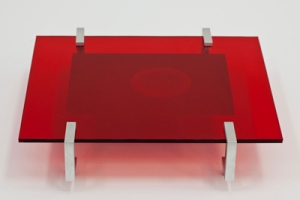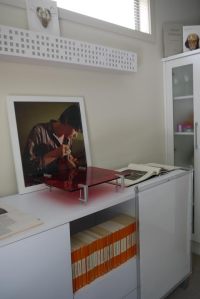DEVELOPING COLLECTION
by alice.tappenden
This morning, I had a read through this ArtNews article, in which several artists discuss when they think their works are truly “finished.” One of my favourite statements came from Mona Kuhn, who commented: “When you feel that you are ready, you want to separate from it. You can’t take it anymore, and you have to push it out. And once it’s out it takes on a life of its own.”
Kuhn’s words acknowledge one of the most interesting issues surrounding art and art history: that while, on the one hand, there are artists, thoroughly invested in their works and their meanings as they see them; on the other, when works are released to the world, artists themselves can’t necessarily control their reception, interpretation, and even evolution. In some cases, they don’t even want to.
Two artworks that experiment with this idea come from our own (tiny) collection. Both untitled, they’re editions by Dane Mitchell that we purchased from Artspace: one, a sculpture, and the other, a print from their 21st birthday editions.
At first glance, both the sculpture and the print appear cool; even minimalist. The sculpture is comprised of industrial matte g-clamps, which are tightened around two sheets of red Perspex; and when the print is framed, it really just looks like a large sheet of white paper (which, I’ve since realised, most people tend to mistake it for, and think we’re just weirdos who spent $150 on something to make our house more “contemporary”).
Walk past when the light is right, however, and you’ll soon notice the trick: bouncing around on that sheet of cream paper are two white circles, so thin you think you might be imagining them. Keep moving, though, and a word emerges in the centre of each circle: CONCEAL on the left, REVEAL on the right. It’s funny and deceptively simple – too simple, perhaps, if it weren’t for the way in which it ties in with the rest of Mitchell’s practice and in particular, with our sculpture. Sitting between the sheets of Perspex, there’s a sheet of dark paper, with a lighter circle emerging (or perhaps disappearing) just off-centre.
That lighter circle, it turns out, is actually a spray of perfume – smell being another ephemeral material in Mitchell’s practice – and the paper is photographic. Ever since we received the work in the mail, peeled a sheet of sticky backing paper off the Perspex, and put it out on the side table, this work has been slowly developing. We’re unsure what it will look like in the future, and how long it will be until that circle disappears completely – if ever. Though 10 of these sculptures have been made, everyone who gets one will end up with something completely different. Where we put it – in the sun, shade, or cupboard when Matt’s parents come home – and even how we move around it, will affect its future state in a myriad of ways. The work, it seems, acknowledges our presence just as much as we acknowledge it. Whether we dust it or not is another matter altogether, given Mitchell’s propensity for gathering dust (his long-running Dust Archive work saw him collect dust from a range of museums and art galleries over a number of years). The work has, as Kuhn described, taken on a life of its own.



